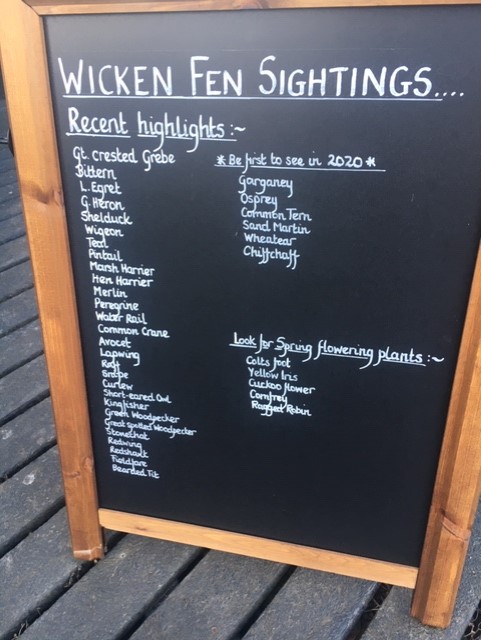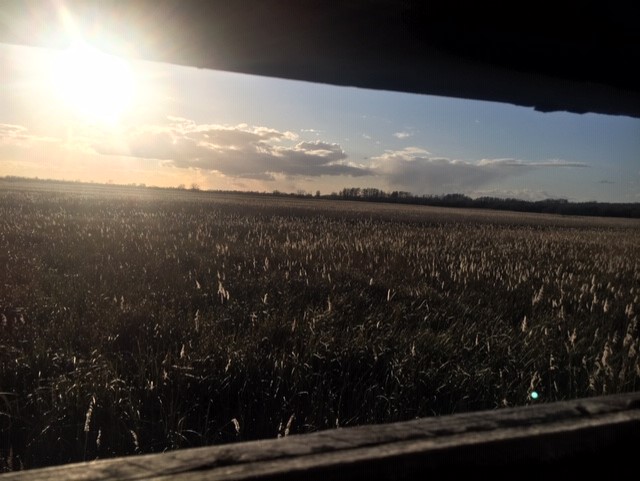
Two weeks today, we will be going back into the courts to appeal the judgment of Hon Justice Lang on brood meddling of Hen Harriers. We, and the RSPB, will be seeking to overturn her judgment that brood meddling of this threatened bird was legal because it was just, for now, research.
Win or lose, this is a fight worth having. Win or lose, thank you to everyone who has supported the crowdfunders that have got us this far. And win or lose, I am very grateful to our legal team for their brilliance and passion.
On Sunday and yesterday late afternoons I was at Wicken Fen, with a different assortment of lawyers, looking for Hen Harriers coming in to roost at the National Trust nature reserve. And on both afternoons and evening we saw Cranes flying, many Marsh Harriers, fantastic Barn Owls over the reedbed and yes, on both days, ringtail and adult male Hen Harriers.
Sunday was cold and windy and we had a short very distant view of a ringtail, and then, just as we were heading back to the car park thinking that it could have been better, an adult male, a grey ghost, floated past. A good view, a pulse quickener and it couldn’t have been much better.
But yesterday was the pressure visit. One of our legal team had missed the earlier visits, for good reasons, and this was the chance to see the bird before going back into court. She wanted to see a Hen Harrier and I wanted her to see one. This was my fifth Hen Harrier search this year and we were four from four so far – could it be five from five?
Yesterday was not so cold, the light was amazing, there were few other people around and the Hen Harriers kept us waiting until the light was really slipping away. But then we had first distant, and then fairly close, views of a (or were there several?) grey male. In the dim light it seemed to shine. We saw the male and a ringtail in the air together in the distance but the backdrop of dark bushes allowed us to pick out the details of the ringtail’s white rump and the black wingtips of the male. The last view of the male was the longest, the closest and the best and we saw him drop into the reeds like a full stop at the end of a chapter. We could all move on.
Hen Harriers are pretty safe at Wicken Fen, far safer than on the grouse moors of the north, and two weeks today we go to court to argue the case that Hen Harriers would want argued – leave them alone, protect them from wildlife crime – that’s all this threatened bird needs.

“Hen Harriers are pretty safe at Wicken Fen, far safer than on the grouse moors of the north…”
Unfortunately they don’t know that and the ones you were lucky enough to see at Wicken Fen may, in time, wander north to the danger zone. Brood meddling won’t change the risk they face of being illegally shot or poisoned. I hope the court case goes well.
Lovely blog Mark. I have been enthralled by Hen Harriers since I saw my first ringtail on 14/06/69 on Fountains Earth Moor Nidderdale. I’ve seen hundreds since in many places, moorland and otherwise , found or visited probably around 75 nests many of which have failed at the hands of criminals, the thrill is always the same and the anger incandescent when they fail. Harrier monitoring has given me some of my very best days and some of the very worst with wildlife, I’m happy to admit they are an addiction I know I share with others. A day out on moorland is truly incomplete without seeing a harrier it belongs there, to me represents the very essence and soul of our uplands . All we are asking people is that they obey the law, is that such a big ask? I’m not asking that they feel as I do, just leave the harriers to get on with their lives unmolested. In reality the “grouse bothering fraternity” is utterly beneath contempt for what they have done and continue to do to this magical bird. Brood meddling is a symptom of both the dreadful history of the harrier in our uplands and a continued wrong headed attitude, legally sanctioned vandalism. I wish you and RSPB a damned good day or two in court. Right is surely on our side.
Paul – thanks.
Mark,
Have you noticed any correlation between wind strength and Hen Harrier activity during you recent roost watches? I watched the big roost on the Isle of Man for about 20 evenings spread over a few years some time ago and there were always more birds visible on windy evenings ( quite regular on the Isle of Man) than when the weather was calm. My best ever count was 49……It was suggested at the time that in calm conditions some Harriers wouldn’t come to the roost.
Trevor – I think I’m a novice really. I find it difficult to estimate how many birds are involved (except when they are all up in the air together). There were several sighting yesterday where distant birds disappeared from view but did they land or were they out of sight but still moving? And did they pop up again without us noticing a bit later?
So, I don’t really know.
I’m somewhat puzzled still as to why they bother to roost communally anyway – what do they get out of it/ And why on the ground where they are vulnerable to Foxes, surely?
Birds are wonderful – partly because we don’t understand everything yet (and probably never will).
Yes, there’s a fair bit of guess work when birds seem to roost but are then perhaps disturbed ( sometimes by incoming birds) and then fly around again.
The roosts that I have watched all seemed to feature boggy ground perhaps to deter foxes but certainly on the Isle of Man some birds didn’t use the roost every evening so perhaps roosted singly where they happened to be hunting. My counts at the Isle of Man roost varied between six and forty nine so even allowing for birds not being spotted on some evenings there was obviously widely differing numbers of birds attending the roost. The strange thing was that I saw very few Hen Harriers whilst daytime birding.
I can only concur with your final paragraph. Thanks.
Trevor – very interesting. I’ve never been to the IoM – must go some time.
The only common factor I can see for roost sites is that they are flat.
Which makes sense if you’re a bird that relies so much on the sail power of your wings.
Has anyone noticed a tendency for ring tails and grey birds to segregate themselves in separate areas at roosts?